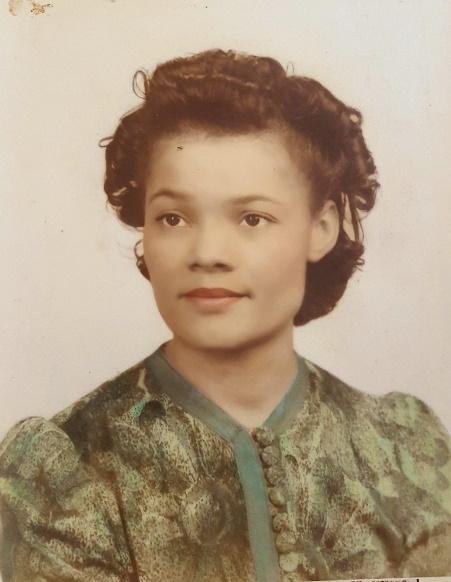Carolyn Beatrice Parker was born in Gainesville in 1917, during the Jim Crow era. Her father, Dr. Julius A. Parker was a physician who graduated from Meharry Medical College, the first medical school in the South for African Americans. Carolyn Parker’s maternal first cousin, Joan Murrell Owens was a marine biologist and was also one of the first Black women to complete a Ph.D. in geology. Six of Julius and Delia Parker’s seven children completed advanced degrees; a seventh child died at age 9.
Carolyn Parker was educated in segregated public schools in Tampa, where she graduated from Middleton High School in 1933. She graduated magna cum laude from Fisk University with a bachelor’s degree in physics in 1938. Between 1938 and 1940, Ms. Parker taught high school in Gainesville. Several of Ms. Parker’s siblings attended Lincoln, including Julia Leslie (Parker) Cosby, who–in 1966–became the first Black woman to teach in Alachua County’s previously all-White schools, according to White and McCarthy. In 1941, Carolyn Parker completed a master’s degree in physics at the University of Michigan. She was the first African American woman known to receive a graduate degree in physics.
Carolyn Parker overcame tremendous obstacles on the way to completing her high school education in Jim Crow Florida. In Florida’s separate and unequal
schools, White-dominated legislatures and school boards drew tax resources out of Black communities and redistributed these to White schools. In 1930, the Alachua County School Board allocated on average $28.97 per White pupil per year while allocating on average only $5.90 per Black student, according to the U.S. Census. Furthermore, the average value of White schools in Alachua County was $24,377, compared with $8,350 for
Black schools. In 1930, African Americans composed 44.6% of the total population in Alachua County. Educational allocations based on race were little different in Tampa, Miami, Jacksonville or any of Florida’s other major cities during this time.
During World War II, while she was only in her twenties, Ms. Parker joined with millions of Americans to do her patriotic duty in the war against Nazism and fascism. Due to her superb mathematical and scientific skills, Ms. Parker was recruited to work as a research physicist with the Dayton Project, a division of the Manhattan Project in which scientists worked with the highly radioactive material Polonium (Po-210). Ms. Parker’s team was tasked in 1943 with separating and purifying the radioactive element polonium, which was to be used as the initiator for the atomic bombs.
African American scientists like Ms. Parker encountered a tremendous amount of racism in the Manhattan Project as their capabilities and skills were often denigrated by their White counterparts. Black scientists at the Monsanto Chemical Company’s headquarters were often mistaken for custodians and had to perform extra duties in laboratories due to racism. In 1944, Ms. Parker’s team had achieved a high level of success separating Po-210 using acid extraction methods and expanded production required moving the operation into larger facilities.
Ms. Parker continued to work as a research physicist at Wright Field in Dayton, Ohio until 1947. From 1947-1951, she taught as an assistant professor at Fisk. In 1952, she was employed as a physicist in the geophysics research division at the Air Force Cambridge Research Center in Cambridge, Massachusetts, a leading research laboratory that emerged from the closure of the M.I.T. Radiation Laboratory and the Harvard Radio Research Laboratory after World War II. In 1951, Ms. Parker entered the physics graduate program at M.I.T., where she earned a second master’s degree in physics in 1953 and completed coursework for a Ph.D. Ms. Parker was elected to the Sigma Xi Scientific Research Honor Society at M.I.T. However, she was unable to complete the process of defending her doctoral dissertation and graduating because she contracted leukemia. A true “hidden figure,” Carolyn Parker died in 1966, at age 48, and is buried at Mount Pleasant Cemetery in Gainesville.





